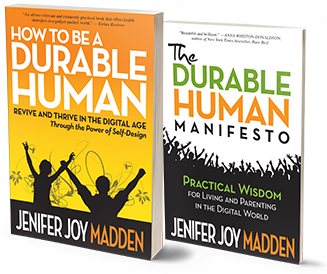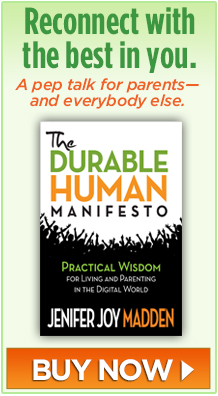I was walking with my friend when she told me her dog, Rita, was having a terrible time with allergies. Nothing—from pricey prescription dog food to medicated soap—made any difference. As she was talking, I thought of a Green Living Meetup I had just attended, the topic: “Ways of Reducing Chemicals in Your Home”. Something I learned there just might help.
I had never been to a Meetup before. When I arrived a little early on that rainy Saturday afternoon, the room in the public library was already half full of a diverse assortment of adults, plus a few babies. Our smiling hosts, Sara and Todd, sat on a table up front next to an array of boxes, bottles and bags.
Sara spoke first, explaining how the human body fights off infection and rids itself of harmful chemicals. Toxins are carried off in secretions such as sweat and mucus, or filtered by the kidneys, liver and other organs. Allergies and chemical sensitivity happen, she claimed, when those mechanisms are overwhelmed. The wafts from a fresh coat of paint or new printer could be the last straw to break the back of the body’s natural defenses.
Promising he’d have good news later, Todd launched into a litany of scary environmental data. A long-range study by the EPA detected 900 chemicals in the air of the average government office building. Indoor air can be ten times more polluted than the air outdoors. Houses, especially new ones, can harbor a host of noxious compounds. Throat-cancer-causing formaldehyde, for instance, may hide in your shampoo, your tissues, your carpet, and the no-iron clothes you wear.
Todd and Sara wanted to help us ratchet back our overall exposure. The pair, who looked to be in their early 30s, had a sweet way about them. They used simple terms and answered questions respectfully. But, of course, they were preaching to a self-selected choir. As a science journalist, I was probably the most skeptical person there.
Peppering their talk with personal anecdotes, our hosts said their “journey” began when they noticed their health took a nosedive when they were at home. Todd, for instance, has bipolar disorder. Every time they had their house cleaned, Todd’s symptoms got worse.
What helped turn things around? Todd and Sara credit NASA and the good, old-fashioned houseplant. Back in the ‘70s, the crew of Skylab was getting sick. When the vessel’s inside environment was simulated back on earth, the air swirled with toxics. Scientists popped in some plants and–voila!–the toxics level plunged.
Todd held up two innocuous leafy specimens. “Every plant has its own unique biosphere,” he said. “Each one is a filter which removes specific chemicals from the air.” The lesson here: use plants to clean the household air, but don’t buy just one type. You need a variety. Sara and Todd have 18 different kinds in their bedroom. And, no—they told a questioner—the plants don’t use up all the oxygen during the night.
We turned our attention to the bottles and boxes. Some were decidedly unsexy, which Todd happens to like the best. He uses the big bag of baking soda for laundry and dishwasher detergent and also as toothpaste. The white vinegar disinfects and cleans countertops. Borax is a natural laundry booster and stain remover. A variety of fancier “green” commercial products also made the cut.
The websites of nine low-toxic cleaning services were listed on a handout, as well as book titles and online references for almost every fact and study Todd and Sara cited.
I wondered about these well-meaning strangers. Neither is a scientist nor what society deems an “expert”. But they clearly researched the subject and had a wealth of personal experience. I thought of Wikipedia which has no paid staff, but has grown into one of the world’s largest fonts of information. Its facts and references are also merged by unpaid knowledgeable individuals. A study in the journal Nature says Wikipedia is nearly as factually-accurate as Encyclopedia Britannica.
When we consult any information purveyor, including Wikipedia and Meetup, it’s up to us to use our judgment to sift through what we see and hear. When we have access to the original sources, we can check the facts for ourselves. Knowing Todd and Sara had given me the tools to do that, my cynical self relaxed.
Which brings us back to what’s wrong with Rita. I am neither a vet nor an EPA official, but I have an idea. Her symptoms have gotten worse since they moved into their just-built home. “But everything’s new!” my pal exclaimed. Yep—right down to the emanating paint, carpet and synthetic wood floor. She sneezes even more after the cleaning service comes. Could Rita’s home be her Skylab?
“How ‘bout you wipe everything down with water and white vinegar?” I suggested. “And put different types of plants around the house. Then we’ll see how she does. I’ll give you a copy of what I got at the Meetup.”
7 Tips for Being a More Durable Human: DOWNLOAD HERE




Thanks for the most level-headed and constructive piece on household toxics I’ve ever read. Plants — we can do that. Changing our household cleaning products might take more time, although we can start with the laundry I suppose.
I’ve found a lot of good information at the Center for Health and Environment Justice (www.chej.org — based in Falls Church). But sometimes I just want to shut this stuff out because it scares you without giving you solutions. Your piece was much more helpful, and it sounds like the presenters you heard were, too.
The link to the softpedia article on plants was illuminating and a little disturbing. I hadn’t realized that energy efficiency can actually contribute to poor air quality.
We also have to walk a fine line when we winterize our homes so that we don’t make things too air-tight that we impede proper circulation with the outside air.